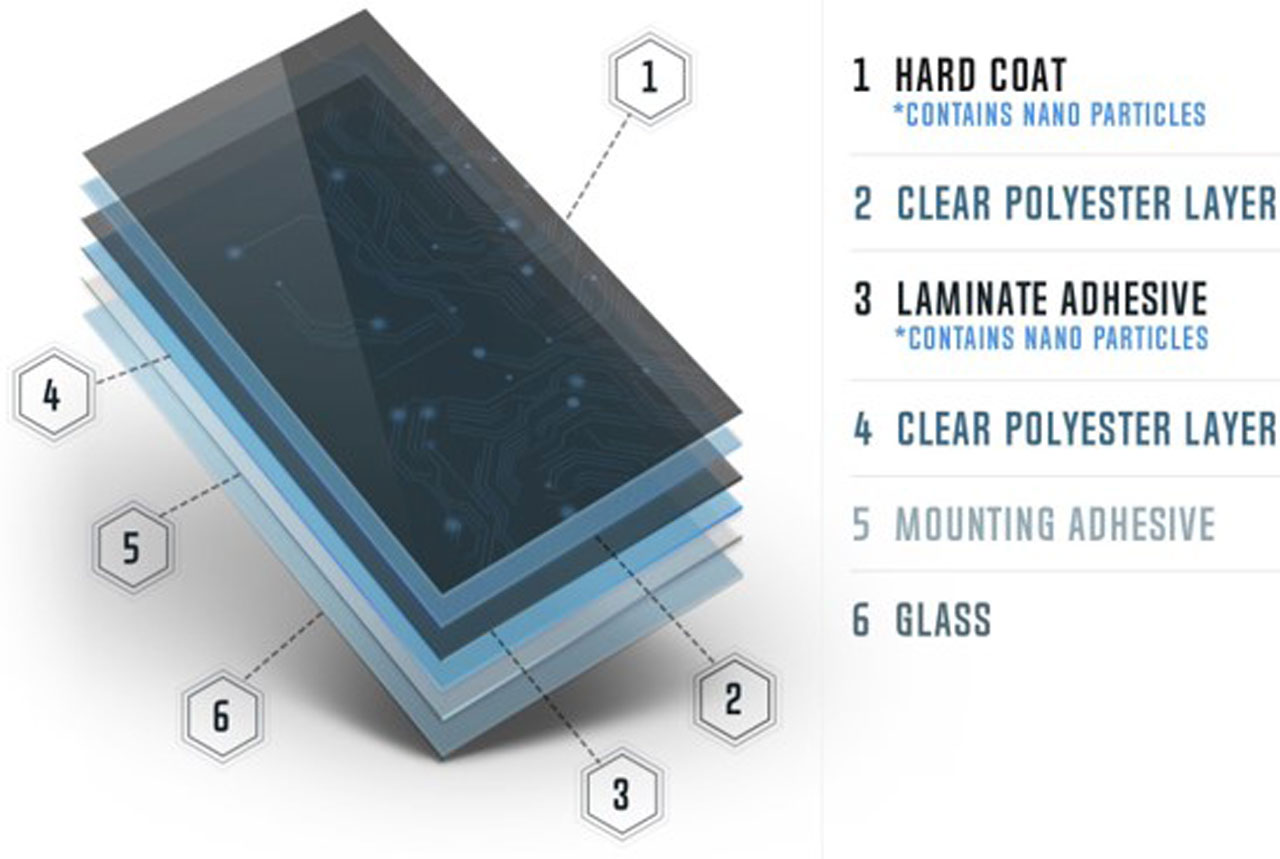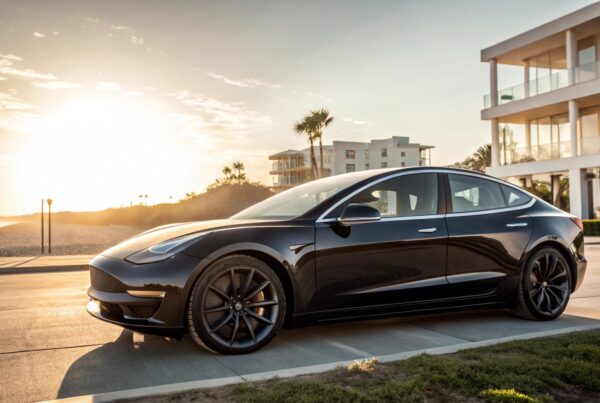There are multiple grades of window tints for cars. Some are designed for aesthetic appeal only – while others are great at providing superior UV protection or infrared radiation blocking technology. Ceramic window tint is the pinnacle of window protection. It’s engineered for superior clarity, blocking 99.9 percent of UVA and UVB, and most importantly – helps to keep the inside of your vehicle cooler – when infused with IR blocking materials.
If you’re searching for the cheapest window tint film possible – ceramic film is not the product for you. It’s a premium product – which correlates to a higher price point. However, like other professional grade automotive solutions, there are some ceramic films that offer car owners more bang for their interior protection buck.
Let’s explore some of the facts about ceramic-infused window tinting solutions – like Ceramic Pro’s latest – KAVACA Ceramic IR Window Film.
How is Ceramic Tint for Windows Made?
There are several different grades of automotive films for windows. Some of the most common include:
Dyed Window Tint: This is tint that is made with a polyester material with a liquid dye. This dye is applied to the inner material based on the level of ‘tint’ desired. The darker the tint (also called limo tint), the lower the VLT rating. So – limo tint would have a visible light transmission of 5 percent. A dyed tint is not as great at blocking UV ray emissions.
Metalized Window Tint: The next level of window film is a metallic tint. It’s made with metallic flakes that help to block ultraviolet rays such as UVA and UVB. These emissions are responsible for damaging surfaces including interior materials like leather, plastic, rubber, and even textiles. However, UVA and UVB is also a main contributor in the development of skin cancer. A metalized window film can also provide added strength to the window – so it doesn’t shatter.
Hybrid Dye/Metallic Film: A mid-grade tint blends the best of dyed and metallic films. It helps to add UV protection and improve clarity. The hybrid tint uses a combination of grey dye and titanium flakes.
Carbon Color Stable: A new kid on the window tint block is carbon color stable. This is a multiple layered dye film with an infusion of carbon tint materials – which adds strength and longevity to its lifecycle. The term color stable refers to using high-quality dyes and polyester linings, that extend the lifespan and reduces the potential of discoloration.
*Editor’s Note: Of the four tints listed above, a carbon window tint offers the best value.
Crystalline Window Tint: The crystalline-infused window tint is the entry point to greater heat resistance. This film is usually a high VLT rating (meaning it’s more transparent) and has exceptional IR blocking technology. It’s made to reduce the potential of heat entering the vehicle vs providing privacy or darker appearing windows. It’s also quite affective at blocking all ultraviolet rays.
Ceramic Window Tint
With a ceramic-infused window tint, nanotechnology is the name of the game. It’s a multiple-layered film that uses microscopic ceramic particles that are nonconductive to block nearly 99.9% of UVA and UVB. The lack of metals in the film helps improve cell phone and electronic device signal strength. Plus, when a nano ceramic tint is infused with IR blocking technology, it can significantly reduce heat entering the vehicle.
You can see in the attached image how this type of film is designed.
- The top layer (or the outermost exposed section) is a hard coat – that contains nano particles. This adds additional strength to the car window and helps to reduce scratching.
- Right below that is a clear polyester layer. This is simple, no-additive, basic polyester – for added depth and thickness.
- The laminate adhesive is where the magic lives. At this point, the ceramic nano particles are blended to create the VLT or visible light transmission rating. It helps improve visibility, even in lower light conditions. Many experts believe that the increased visibility is a significant improvement vs lower-grade film.
- The final two layers include another clear polyester film (to create the ceramic sandwich) and finally the mounting adhesive.
What are the Benefits of a Ceramic Window Film?
Anytime you opt for a higher-grade product, it should come with some elevated attributes. Such is the case with a ceramic tinting for windows vs buying a regular tint.
Superior UV Protection
UV and infrared rays are harmful, dangerous, and can cause life-altering changes. The sun emits many different levels of radiation. The three main emissions are Infrared Radiation (or IR) which creates heat, UVA (which penetrates deep into tissues and materials) and UVB (which damages surface levels). Ceramic tint can block up to 99.9% of UV rays.
Exceptional Heat Resistance
Did you know that NASA’s Space Shuttle featured ceramic tiles along the bottom of the orbiter – which helped protect Astronauts during re-entry? While the IR emissions from the sun on Earth are not that hot, similar materials in this upgraded window tint help to block heat from entering the vehicle. There are some superior grade ceramic tints that are infused with added IR blocking technology for even better heat resistance.
Minimal Signal Interruption
Typically – with elevated window tints of the past, with enhanced ingredients, comes with some drawbacks. The main issue is a blocked cell or electronic signal, like Bluetooth, Wi-Fi, or radio. This is typically due to the metallic infusion of materials – which add depth and strength. Nano ceramic technology removes this issue – for crystal clear phone calls.
Superior grade Ceramic IR window film contains ceramic nano particles/molecules that aren’t metallic nor conductive. It is designed to reflect the highest amount of UV and infrared heat or rays while absorbing the highest levels of light. This allows for maximum visibility and solar protection. It’s like a professional grade ceramic coating for windows.
Is Ceramic Tint Worth the Money?
When you compare the pricing between the multiple grades of automotive window film, ceramic film offer the best bang for your buck. The added IR protection, reduced cell signal blocking, and the ability of some brands to bond better to windows, or to be used as a windshield IR blocking tint, leads to longer-lasting protection. So – in a nutshell, ceramic tint for cars is a great investment.
If you’ve been thinking about having a ceramic window film installed on your vehicle, Ceramic Pro has a revolutionary solution for you. KAVACA CERAMIC IR is the ultimate Window Film, manufactured with state of the art technology. Ceramic Pro has formulated a proprietary formulation of nanoceramic technology with an IR layer to deliver excellent Heat Rejection, Glare Control and UV protection that is metal-free; supporting signal clarity for all types of electronic devices.
KAVACA Ceramic IR lets you customize your car with any of the 6 shades offered, without sacrificing clarity nor the loss in heat rejection with clear VLTs. KAVACA Ceramic IRs advanced technology offers a non-reflective, color stable finish that will not fade over time.
Ceramic Pro has many years of experience in the industry of vehicle and surface protection. KAVACA Window Films have been designed and tested with extensive research to give you the top looks and performance. If you’d like to learn more about our new line of window tint for cars, or receive a free estimate from one of our certified installation centers, click the button below.






